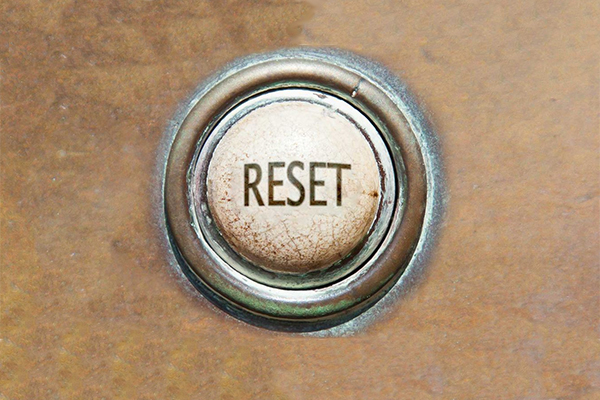Time to work on your company’s reset strategy
April 29, 2020
Share

Some provinces and states have announced preliminary plans to ease restrictions and reopen their economies. While we may not all agree on when this should happen, at least from a business perspective it is good news. Regardless of when “reset” gets pressed in your organization, now is the time to determine what your next steps will look like. Don’t wait for permission before you start planning.
Politicians are using terms like “gradual”, “measured” and “safe” to describe their approach to removing coronavirus restrictions. Such language, we can anticipate, will have a number of operational implications. Conditions could include:
- Gatherings and groups larger than 30 (or pick a number) will remain prohibited, including crowds at sporting events, concerts and festivals.
- Restaurants, salons and barbers may open to half of normal capacity, keeping in mind the above restriction on crowd sizes.
- Stores will open, but with restrictions on the number of people permitted entry at one time.
- Airlines, trains, buses and other transit may require passengers to wear masks (such restrictions already exist in some cases), while operating half-full or at partial capacity.
The sudden swell in activity may also lead to shortages as supply chains restart. Anticipate continued limits to masks and cleaning supplies, some food products and other materials. That retailers and others have done as well as they have managing inventories over the past two months without significant shortages is remarkable. It is a testament to preparation and crisis-management planning.
In the meantime, remember my colleague John Moore’s favourite line, that “cash is king”. Can you renegotiate your lease or find a less expensive or smaller footprint? Do you have inventory you can clear out? Consider a shoe retailer that has been deeply discounting its existing inventory by 50 per cent or more. This may result in some customers “buying ahead” and therefore not needing shoes later. The upside for the shoe retailer, however, is that it’s freeing up cash. Plus, people are buying shoes from this store now, rather than from another retailer later on.
All phasers on reset
With all that in mind, what might Reset Phase One look like for your organization? Think about what your processes will look like with a limited work crew. After all, you may not be able to afford to bring everyone back. Or the crowd-size restrictions noted above may limit your number of employees. If you are limited in the number of customers you can permit entry, can you speed processes up without significantly diminishing service, and thus optimize sales? I don’t think people will want to linger in the near term regardless, so they may appreciate the faster service.
Consider the breadth of your offering as well. McDonald’s and Tim Hortons have shrunk their menus for takeout purposes during the pandemic (long overdue, people have heard me argue). What would your menu or service offering look like if you cut it in half? Look at your historical data showing what people buy most of and most often. Ask yourself, will we continue to have access to the materials and supplies necessary for that refined menu?
Retailers may also open by department, rather than the whole store. A home improvement store might start with the garden centre, patio furniture and outdoor building supplies. Other goods will remain available through a quickly improving online order and pickup system.
University semesters are essentially wrapped up at this point, with the spring/summer semester starting in May, and continuing a distance education model through the summer. Public schools, however, may consider bringing students back in alternating half-sized groups for the final month of classes. This would certainly be complicated. But it would give educators the opportunity to focus on some of their most important content for a short period, provide parents a break at home, and offer a huge morale boost for students getting to wrap up the year in person.
Some questions and thought starters as you map out Phase One of your comeback:
- Who will our first customers be? Will we focus on our historical “best” customers or members-only in certain operations? Or do we allow pent-up demand and marketing efforts to draw the general public?
- Would a “welcome back” event be meaningful for people who have supported us in the past, and allow us to warm up through a soft opening?
- Which employees will we call back first, given the customers or product line we want to focus on first?
- Do we have inventory or access to the right supplies for that initial market?
- Are our processes designed to support the Phase One opening?
Opportunity knocks
Individually, a crisis often provides opportunities to press “reset” in our careers as well. The pandemic may have emphasized the need to accelerate a plan we have had already, or highlighted a problem we didn’t know we had.
Challenges and needs have emerged in all operations, and organization may not have the expertise or resources to fill those needs. A friend and former teammate, John McDougall, used to say to me, ‘Give me your biggest problem!’ I often did, and he delivered, even when it was outside his role. Speak up and step up — there are some huge opportunities out there right now.
Crises create gaps and voids within organizations and the market as a whole. Those who fill those gaps will position themselves for growth and perhaps redefine that space.
This article was first published by Smith Business Insight.
_______________________________________________________
Barry Cross is an assistant professor and Distinguished Faculty Fellow of Operations Strategy at Smith School of Business and bestselling author of Simple: Killing Complexity for a Lean and Agile Organization.